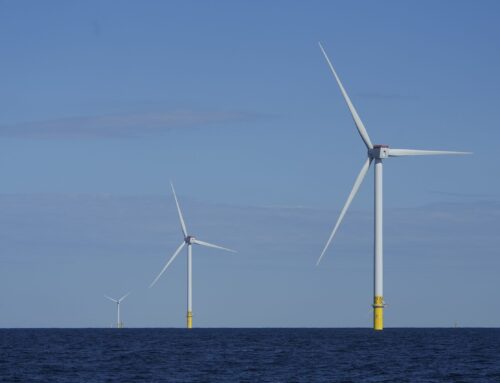EIA: Solar + storage dominate, fossil fuels stagnate to August 2025
October 27, 2025

Solar and battery storage continue to dominate growth among energy sources, while fossil fuels and nuclear power have stagnated. That’s according to data just released by the US Energy Information Administration (EIA), which was reviewed by the SUN DAY Campaign.
EIA’s latest monthly “Electric Power Monthly” report (with data through August 31, 2025), once again confirms that solar is the fastest-growing among the major sources of US electricity.
In August alone, electrical generation by utility-scale solar (>1 megawatt (MW)) grew by 29.5% compared to August 2024, while “estimated” small-scale (e.g., rooftop) solar PV increased by 10.8%. Combined, they grew by 24.7% and provided 9.5% of US electrical output during the month, up from 7.6% a year ago.
Moreover, utility-scale solar thermal and photovoltaic systems expanded by 35.7%, while those from small-scale systems rose by 11.0% during the first eight months of 2025 compared to the same period in 2024. The combination of utility-scale and small-scale solar increased by 28.8% and was over 8.9% (utility-scale: 6.7%; small-scale: 2.2%) of total US electrical generation for January-August, up from 7.1% a year earlier.
Advertisement – scroll for more content
As a consequence, solar-generated electricity YTD easily surpassed the output of US hydropower plants (5.6% of total generation) by over 58%. In August alone, solar-generated electricity more than doubled the output of the nation’s hydropower plants. In fact, in both August and YTD, solar produced more electricity than hydropower, biomass, and geothermal combined.
Moreover, for the second consecutive month, utility-scale solar generated more electricity than US wind farms – by 4% in July and by 15% in August. Including small-scale systems, solar has outproduced wind four months in a row and by almost 50% during August.
Wind turbines across the US produced 10.2% of US electricity in the first eight months of 2025 – an increase of 2.6% year-over-year and 80% more than that produced by US hydropower plants.
During the first eight months of 2025, electrical generation by wind plus utility-scale and small-scale solar provided 19.1% of the US total, up from 17.2% during the first two-thirds of 2024.
Further, the combination of wind and solar provided 16.2% more electricity than did coal during the first eight months of this year, and 11.7% more than US nuclear power plants. In fact, as solar and wind expanded, nuclear-generated electricity dropped by 0.7%.
The mix of all renewables (wind, solar, hydropower, biomass, geothermal) produced 9.0% more electricity in January-August than a year ago. It provided 26.1% of total US electricity production compared to 24.5% 12 months earlier.
Renewables’ share of electrical generation is now second to only that of natural gas whose electrical output actually dropped by almost 4.1% during the first eight months of 2025.
Between September 1, 2024, and August 31, 2025, utility-scale solar capacity grew by 31,706.5 MW, while an additional 5,718.1 MW was provided by small-scale solar. EIA expects to see 34,325.8 MW of utility-scale solar capacity added in the next 12 months.
Battery storage also saw strong growth, which grew by 63.9% during the past year and added 13,377.5 MW of new capacity. In the course of the past year, battery storage actually surpassed pumped hydro storage (PHS) in October 2024, and now accounts for 50% more storage capacity than PHS. EIA also notes that planned battery capacity additions during the next year total 20,179.8 MW.
Wind also made a strong showing during the past 12 months, adding 4,791.9 MW, while planned capacity additions over the next year total 9,650.1 MW.
On the other hand, natural gas capacity increased by only 3,337.7 MW, and nuclear power added a mere 46.0 MW. Meanwhile, coal capacity plummeted by 4,185.1 MW, and petroleum-based capacity fell by 658.7 MW.
Thus, during the past year, renewable energy capacity, including battery storage and small-scale solar, ballooned by 55,419.6 MW while fossil fuels and nuclear power combined actually declined by 1,486.3 MW.
“The Trump Administration and its Republican supporters in Congress may slow renewable energy growth a bit,” noted the SUN DAY Campaign’s executive director Ken Bossong. “However, EIA’s data reinforce the conclusion that the transition to solar, wind, other renewables and storage continues, is accelerating, and has become inevitable.”
Read more: As Texas power demand surges, solar, wind and storage carry the load

The 30% federal solar tax credit is ending this year. If you’ve ever considered going solar, now’s the time to act. To make sure you find a trusted, reliable solar installer near you that offers competitive pricing, check out EnergySage, a free service that makes it easy for you to go solar. It has hundreds of pre-vetted solar installers competing for your business, ensuring you get high-quality solutions and save 20-30% compared to going it alone. Plus, it’s free to use, and you won’t get sales calls until you select an installer and share your phone number with them.
Your personalized solar quotes are easy to compare online and you’ll get access to unbiased Energy Advisors to help you every step of the way. Get started here.
Search
RECENT PRESS RELEASES
Related Post




